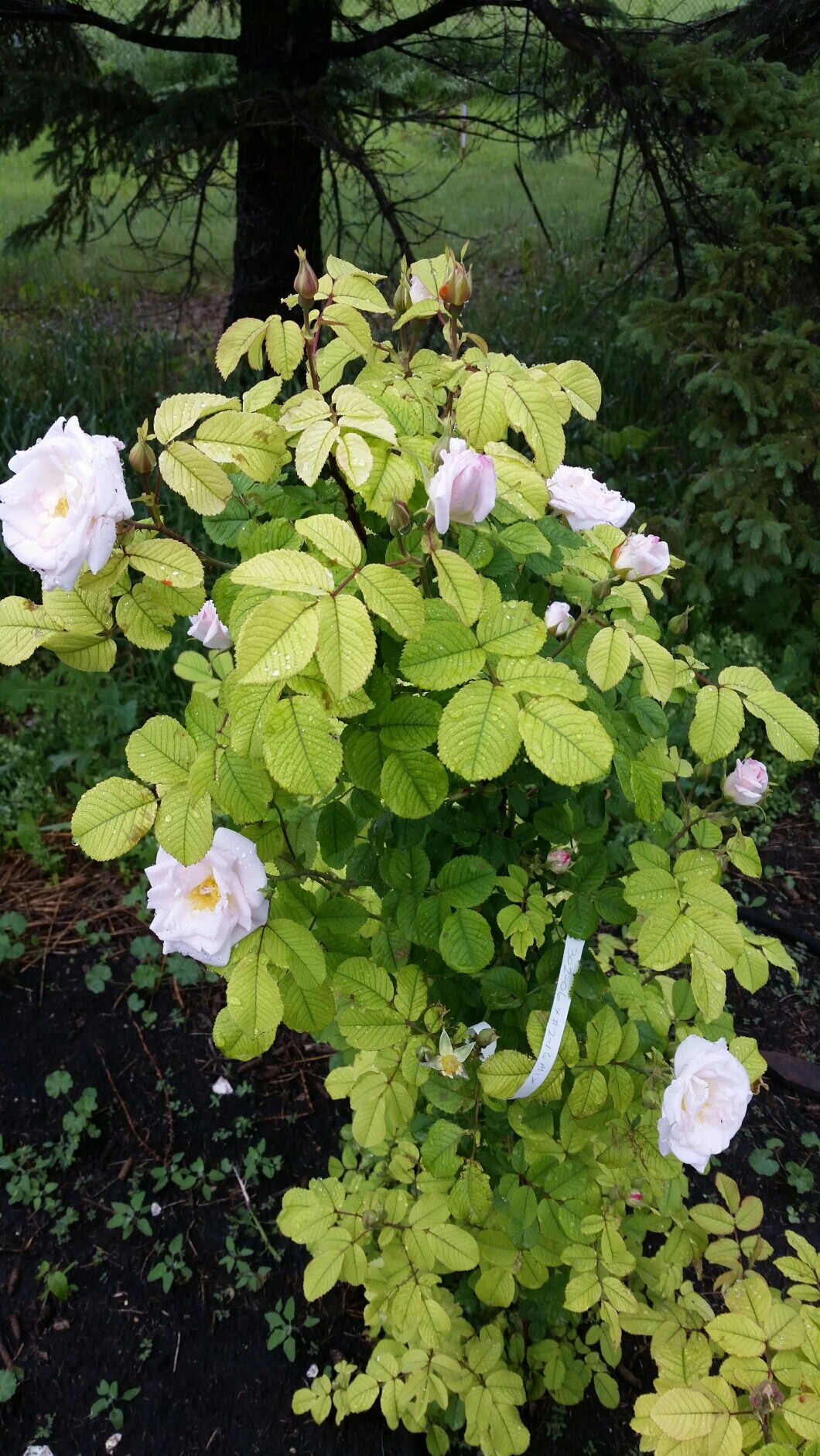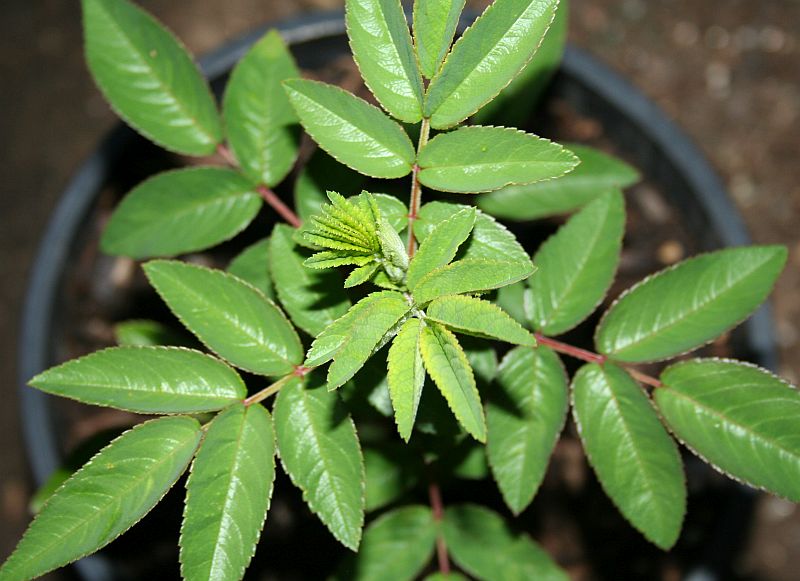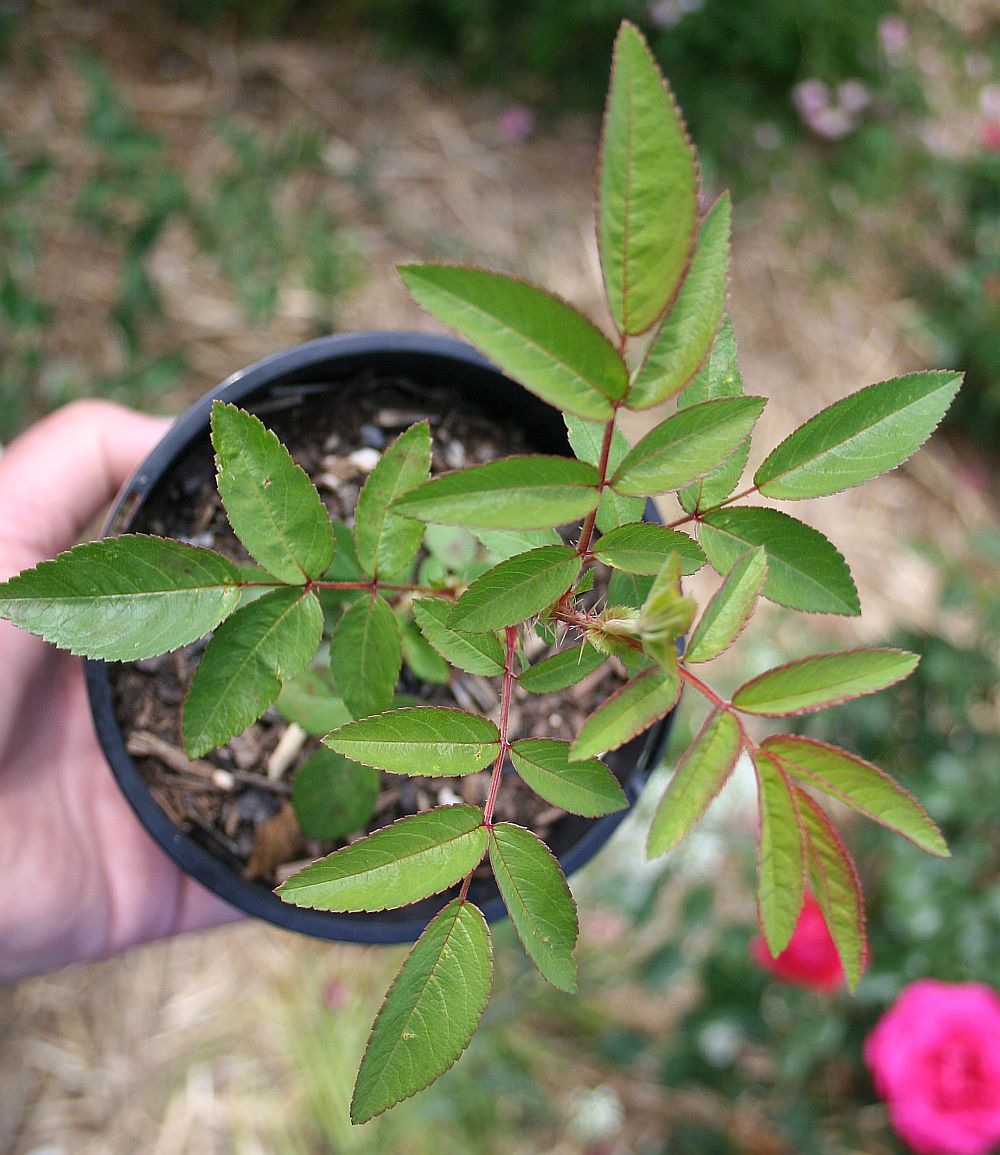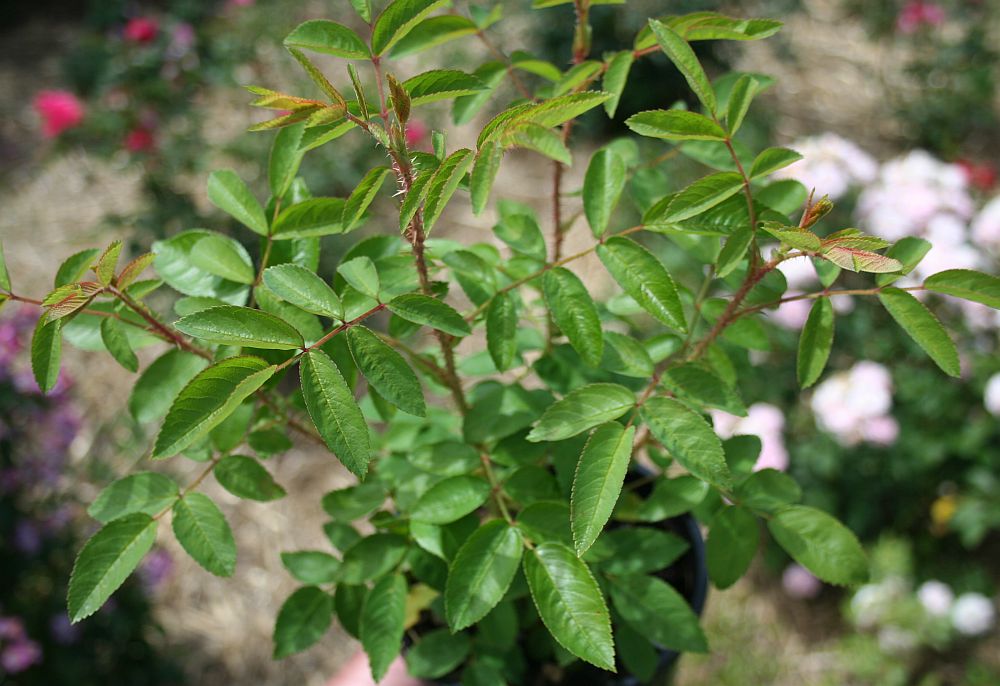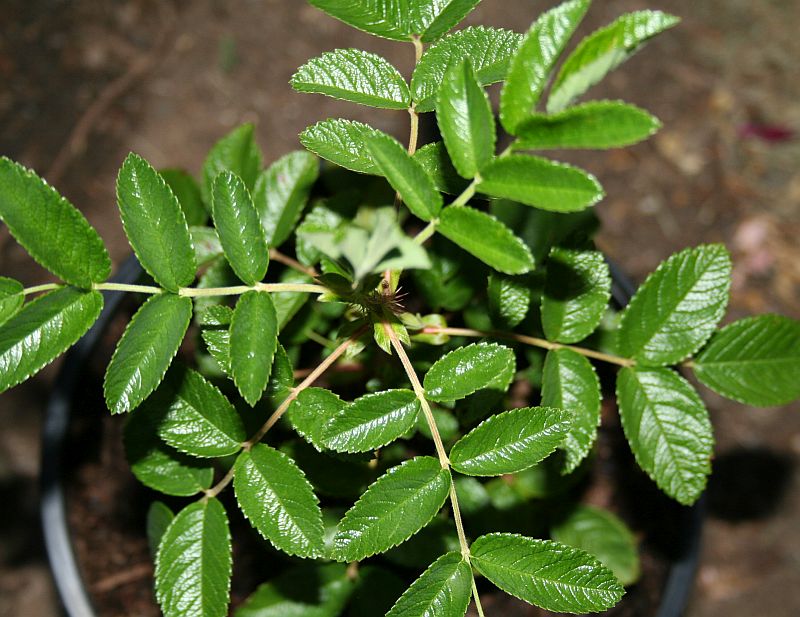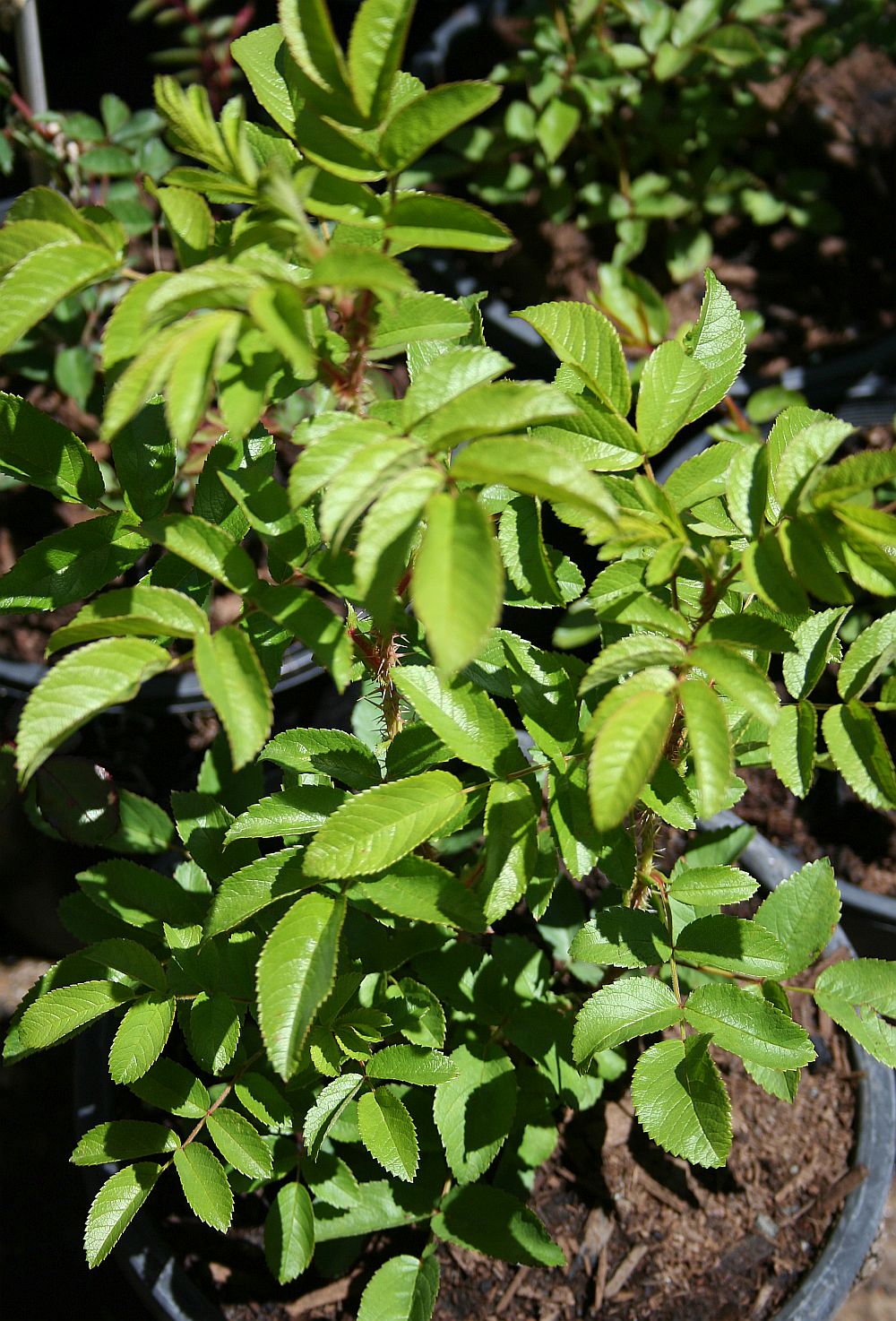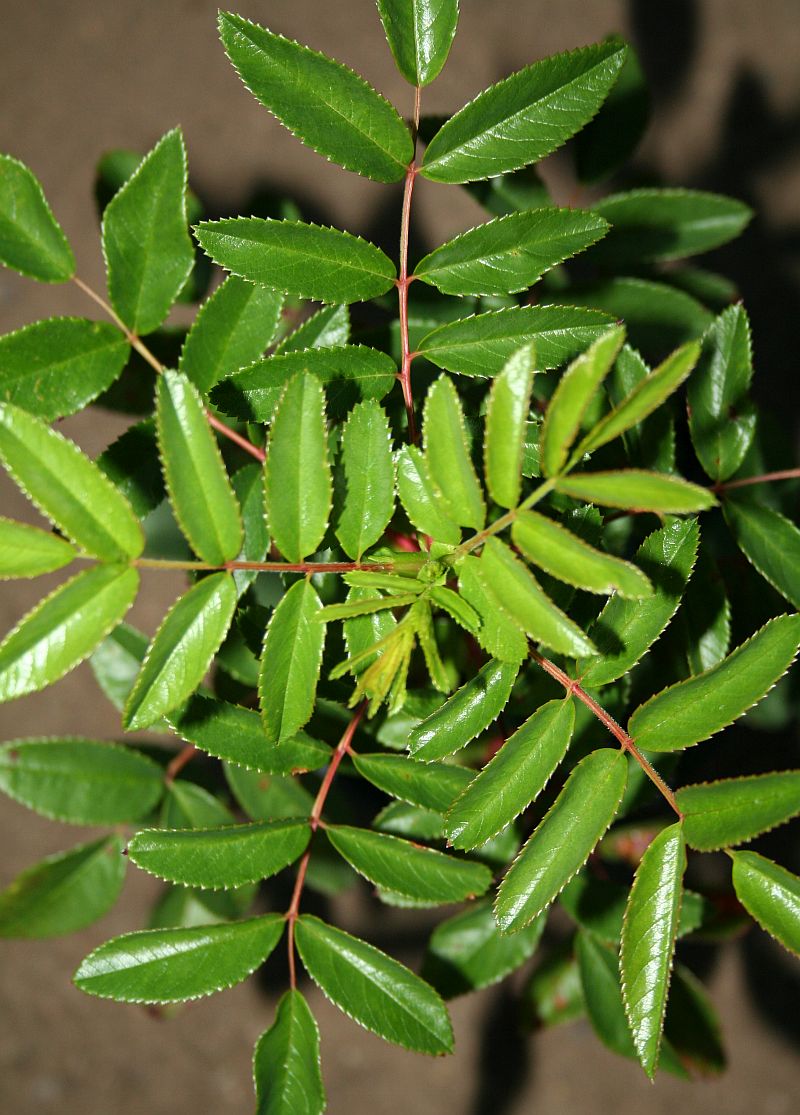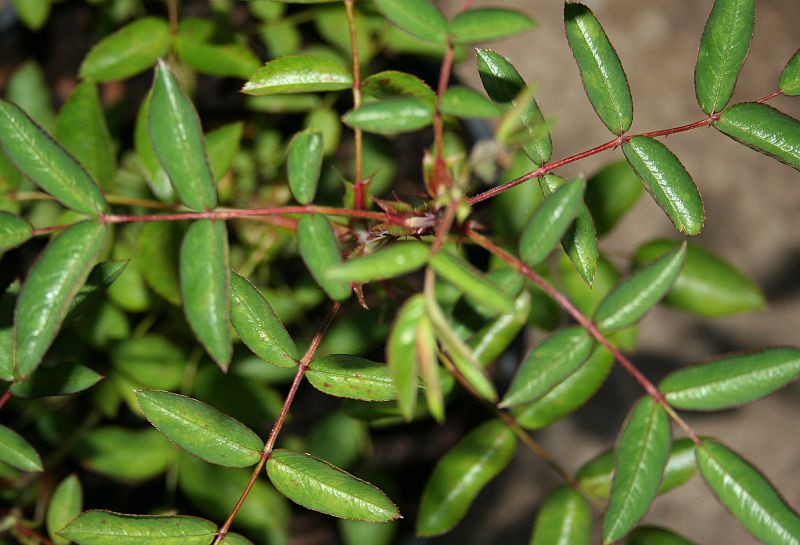My favourite roses are Rugosas, since they are ideal to grow in a Zone 3 climate I have mostly lived in. I’ve grown many cultivars over the past few decades in several Canadian cold and warm geographical locations.
This year I had a bumper crop of Rugosa seedling from my breeding work in 2016. Cultivars used included ‘Hansa’, ‘Snow Pavement’, ‘Aylsham’, ‘Schneezwerg’, ‘Caroyal’, ‘Jens Munk’, ‘Apart’ and ‘Carlos Dawn’.
I was surprised at the lack of disease resistance (powdery mildew and blackspot) in most of the seedlings. Only a few were worth keeping for future evaluation. For example, three ‘Hansa’ x ‘Caroyal’ seedlings, which had large leaflets. A couple of ‘Schneezwerg’ seedlings (staminate parent undetermined yet) were okay, too.
One ‘Hansa’ x ‘Juns Munk’ seedling was totally clean and had attractive, shiny green foliage. Flowers were nothing special though, just single and a light pink in colour. Interestingly, in late October when the other Rugosa seedlings had turned a fall colour the foliage of this seedling didn’t.
Obviously, I’m going to focus on using ‘Jens Munk’ in the future to breed with other Rugosa cultivars. Also, with ‘Fru Dagmar Hastrup’, one of ‘Jens Munk’ parents, which is likely responsible for the disease resistance of the latter cultivar. Of course, ‘FDH’ has very attractive foliage and perhaps it’s this feature that contributes to disease resistance to its descendants.
I note the Rugosa ‘Claire Laberge’, while the flowers are nothing special, the foliage is disease resistant. ‘Jens Munk’ is one of its parents (the other is ‘Scabrosa’).
From this experience, it resulted in me having far more appreciation for the rose breeders who developed Rugosa cultivars that are commonly grown today because of their good disease resistance.
